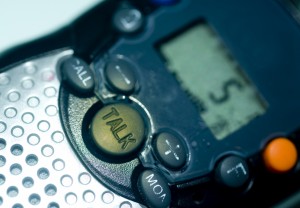 Finding the ideal two-way radio can be challenging. For starters, there are many different models available on the market. In order to start your search you must first identify your needs in regards to a two-way radio. Are you seeking a two-way radio for personal use or business? Do you need a radio to communicate over long distances or short distances? Identifying your exact requirements will help you find a radio that offers everything you need and more.
Finding the ideal two-way radio can be challenging. For starters, there are many different models available on the market. In order to start your search you must first identify your needs in regards to a two-way radio. Are you seeking a two-way radio for personal use or business? Do you need a radio to communicate over long distances or short distances? Identifying your exact requirements will help you find a radio that offers everything you need and more.
Not all two-way radios are created with the same features and capabilities; it’s actually the exact opposite. Some two-way radios offer GPS and hands-free communication, while others are coveted not for fancy features but because they are lightweight or incredibly durable. Knowing your options is useful so that you get a two-way radio that offers the best bang for your buck.
Types Of Radios
There are two main groups of two-way radios you have to pick between, Family Radio Service (FRS) and General Mobile Radio Service (GMRS).
FRS systems produce lower levels of power and can transmit over 7 FRS channels and 7 shared FRS/GMRS channels. This gives you a total of 14 different channels to communicate across.
A GMRS system provides a higher energy output and offers a total of 22 channels to communicate across. In order to use a GMRS radio the Federal Communications Commission (FCC) requires you to obtain a 5-year license.
How Much Range Do Your Radios Need To Provide?
Radio range is dependent on the distance your 2-way radios need to communicate across. Most 2-way radios are only capable of communicating from 2 miles away or less. This is not going to cut it for many businesses. If you need 2-way radios capable of sending and receiving messages from greater distances this is something to put at the forefront of your radio search.
The terrain you are working with will also impact the ability of two-way radios to communicate vast distances. Topography, weather, electromagnetic interference, large metal surfaces and dense forests can decrease radio signals considerably.
If your seeking two-way radios capable of communicating across different city lines there is finally a way to do so, it is known as Wide Area. Highland Wireless is one of the first to offer this innovative solution, allowing people to communicate via two-way radios from the South Florida Keys to Orlando, or as much as 300 miles away.
Comparable Features To Consider
Different two-way radios offer different features, some of which you might need and others not so much. Knowing the current options available can help you determine the best device for any job. Comparable features you should consider include:
Size and weight of two-way radio: Size and weight will hold varying degrees of importance depending on the type of job or recreational site the radio will be used at. For instance, if someone needs to easily use and access the radio while navigating a snow covered mountain on skis, a big bulky radio is not advised.
Communication alerts: Some two-way radios offer both paging and calling features, while some only offer calling. Certain models also offer the option to set different tones for certain callers in order to better attract attention and alert members to who is calling. Some models also offer vibrate options.
Keypad Lock: This feature prevents a two-way radio from placing calls and changing settings without the users permission. Imagine if you could not lock your cell phone, it would be doing all kinds of things if you placed it in your back pocket.
Noise filters: If you need to use two-way radios in a noisy area a noise filter is especially useful.
Headset Jacks: If you plan to use accessories for radios, such as headphones or microphones, you will need to purchase a two-way radio that offers a headset jack. It is a common misconception that all radios come with one, but they do not.
VOX: Are you in need of a hands-free radio? The voice activated feature available on certain two-way radio models allow you to simply speak in the direction of the radio in order to magnify your message across channels. This means users can communicate without ever picking up or physically handling the radio.
GPS capabilities: If you need your radio to provide a GPS signal it will cost more money but prove very useful. A GPS signal provides direction as well as pinpoints the location of all two-way radio devices in a particular fleet.
Durability: Durability may be at the top of your priority list depending on how much wear and tear your two-way radios must endure. Certain models offer dust, water and impact resistance.
Highland Wireless offers superior two-way radios, technical services, networking options and more. Contact us today to see how we can help you stay connected via two-way radio!
